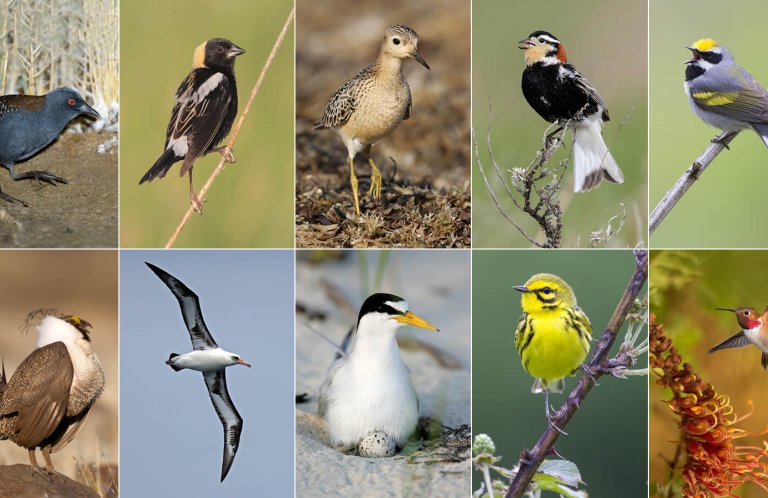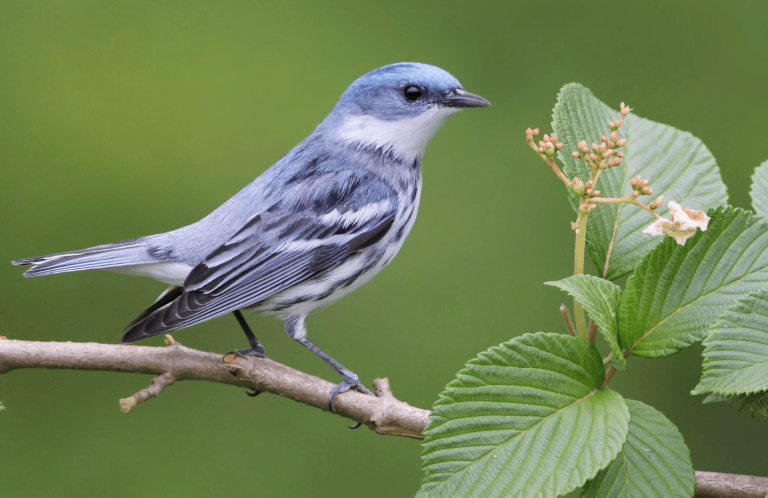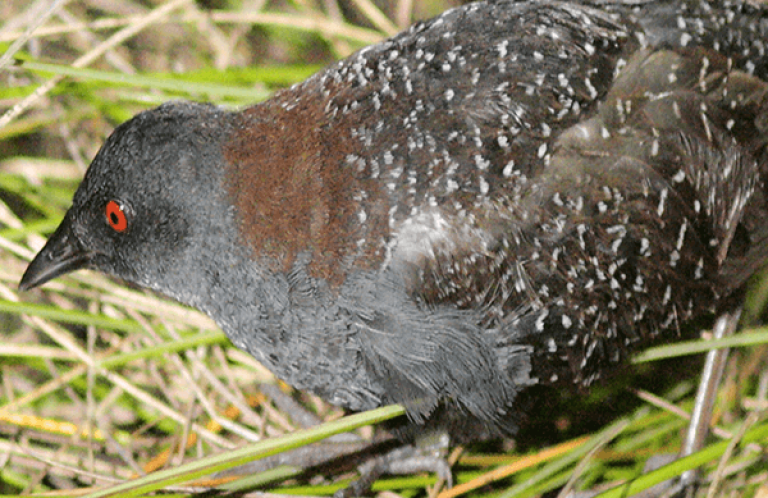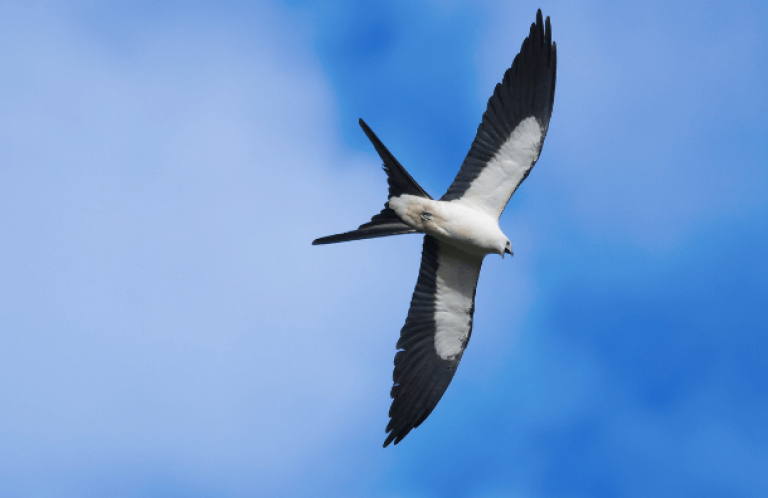Can the Black Rail Be Saved?

The recently published 2022 State of the Birds Report carried messages both of warning and of hope for U.S. birds. On one hand, redoubling conservation efforts right now could save many species whose populations are in freefall. On the other, a business-as-usual scenario could send these same species spiraling toward the brink of extinction. The urgency of this moment in history is exemplified by the report's 70 “Tipping Point” species.
Tipping Point species are U.S. birds that are not currently protected by the Endangered Species Act, but which have quietly suffered heavy losses and are on track to decline further without increased conservation attention. The list includes familiar species like the Bobolink, Chimney Swift, and Rufous Hummingbird, but also more secretive and poorly understood species like the Black Rail.
EJ Williams is the Vice President for the Southeast and Atlantic Coast Region for American Bird Conservancy (ABC) and was a member of the team that helped put together this year's State of the Birds Report. That team ― called the “Road to Recovery” team ― was formed to address the loss of nearly 3 billion birds from the U.S. and Canada.
Williams' years of on-the-ground bird conservation experience collaborating with researchers, field biologists, and landowners alike give her a unique perspective on conservation challenges and opportunities. Most recently, Williams has been working with the Atlantic Coast Joint Venture in the Mid-Atlantic to help the Black Rail, an enigmatic marsh bird that has been vanishing from the northern parts of its range.
ABC Writer/Editor Rachel Fritts sat down with Williams to talk about her role in the report, the urgent message of Tipping Point species, and her work with the Black Rail.
RF: Tell me a little bit about your role with the “Road to Recovery” team that helped put together the 2022 State of the Birds Report.
EJW: The Road to Recovery team has a pretty broad range of people involved, some of which are the really talented scientists that take all that wonderful bird data and make sense of it, but my role has not been in the science methodology. I've mainly been involved in reviewing and making sure that the information is understandable and that it's going to resonate with people.
So, my main role is helping make sure that the information comes together in a digestible way, in a way that people can really look at it and understand it and then be inspired by it. In other words, now that we have the science that helps us prioritize species, how do we work with people, and how do we work with our partners, to do something about the species on the Tipping Point list?
RF: In your own words, can you explain what a Tipping Point species is as defined in the new report, and the conservation value of having this concept?
EJW: The Tipping Point species are species that have lost 50 percent of their population in the last 50 years, and are expected to lose another 50 percent in the next 50 years. And so, this really is a warning, but another message of this State of the Birds Report is that we can do something about the declines.
I think one of the things the Tipping Point list gives us is a renewed sense of urgency. The whole idea behind the Tipping Point list is, we can't waste time. These species are at that point where they need to have attention, or they will tip in the wrong direction. Rather than let [that happen], let's act now to turn things around for these species. And the actions needed to address the Tipping Point species' needs — whether it's habitat [protection or management] or reduction in some type of specific threat — can also be so beneficial for other birds, and other wildlife species, and for people.
RF: One of the Tipping Point species identified in the report is a little wetland bird called the Black Rail. Can you tell me a bit about this bird and what makes it special?
EJW: Black Rails are almost unanimously referred to as the most secretive of the secretive marsh birds. So they're very, very difficult to see. You can hear them if you get in the right place — they have a great little “ki-ki-do” call — but they're very hard to see. This is a sparrow-sized marsh bird, so even if you're in the right place at the right time, you might hear them, but you won't always be able to see them.
They are also beautiful. They're just this stunning black bird with little flecks of gray, and this entrancing red eye. And they have these little bitty short legs, and their chicks are these itty bitty little black fuzzballs.
RF: What has been happening to Black Rail populations in the last decades, and what are their biggest threats?
EJW: We've got [Black Rails] in North Carolina, a few in South Carolina, none that we know of right now in Georgia, and then [we have some] in Florida. There are also Black Rails on the Gulf Coast in Texas, which seems to be a stronghold for now.
They used to nest as far north as at least New Jersey, and now the northern-most breeding population is in North Carolina. So they've essentially disappeared as breeders north of North Carolina, and we've had populations just blink out. We don't know all the reasons they declined so fast and so precipitously, but a lot of it is habitat loss.
We do know that they've been impacted by sea level rise. If your legs are only about a quarter of an inch long, it doesn't take much sea level rise to put you in a bind. And then, you know, everybody likes the coasts, so coastal development of marsh habitats has pushed them into this zone of very little habitat. If you look at the quality of some of the marsh habitats, they've just declined over the years.
RF: What sorts of work are ABC and its partners doing to help the species?
EJW: ABC participates as part of the Atlantic Coast Joint Venture, and we help with developing conservation strategies. A part of that is a standalone Black Rail Conservation Plan. The plan lays out all the needs: what we need to do in terms of policy, what we need to do in terms of habitat creation, what we need to do in terms of habitat protection. We help with the big picture.
We're putting a big emphasis on creating areas around the existing populations on the Atlantic coast to protect each current population and allow the birds to expand into habitat surrounding breeding sites. We've got the right people to pull together best management practices and we know a lot about where to concentrate our efforts.
For instance, we're working with Alligator River National Wildlife Refuge in North Carolina to turn one of their impoundments into one that's focused on Black Rail habitat. We helped support a seasonal employee that went out every day and did measurements of water level in the impoundment under different conditions. It's just nitty gritty, roll your sleeves and your pants up and get out in the impoundment and see what's going on.
We're also trying to help secure some funding for a project in South Carolina, and some projects in Florida. An interesting thing about Black Rails, which is a little bit of a mystery but also gives us some opportunities, is they're not just dependent on the salt marsh. They can actually nest and do well in freshwater marshes, in the right conditions. We're going to work on the creation of non-tidally influenced habitat.
RF: What advice do you have for people who might not be trained biologists, but still want to make a difference for the Black Rail and other Tipping Point species? What actions can they take?
EJW: A couple of things come to mind. One is to contact your legislators, contact your senators, contact your representatives, and tell them that birds matter. There are government funding sources specifically that address bird conservation. So, contact your state and federal leaders and tell them birds matter and tell them that you care about funding for birds. And of course, ABC provides action alerts that can help people know when the timing is right to contact those legislators.
Another thing is, of course, to donate to conservation organizations. ABC is an obvious one, but we work with a lot of different partners.
Then the other thing I would say is just go spend as much time as you can outdoors enjoying birds and really let birds touch you in a way that drives your own actions. Whether it's reducing your plastic footprint or your energy consumption, all those things will ultimately influence the natural world. Go outside, enjoy what the birds are telling you, and then make your lifestyle bird-friendly.
###
American Bird Conservancy (ABC) takes bold action to conserve wild birds and their habitats throughout the Americas. Inspired by the wonder of birds, we achieve lasting results for the bird species most in need while also benefiting human communities, biodiversity, and the planet's fragile climate. Our every action is underpinned by science, strengthened by partnerships, and rooted in the belief that diverse perspectives yield stronger results. Founded as a nonprofit organization in 1994, ABC remains committed to safeguarding birds for generations to come. Join us! Together, we can do more to ensure birds thrive.
Media Contact
Jordan Rutter
Director of Communications
media@abcbirds.org


















































